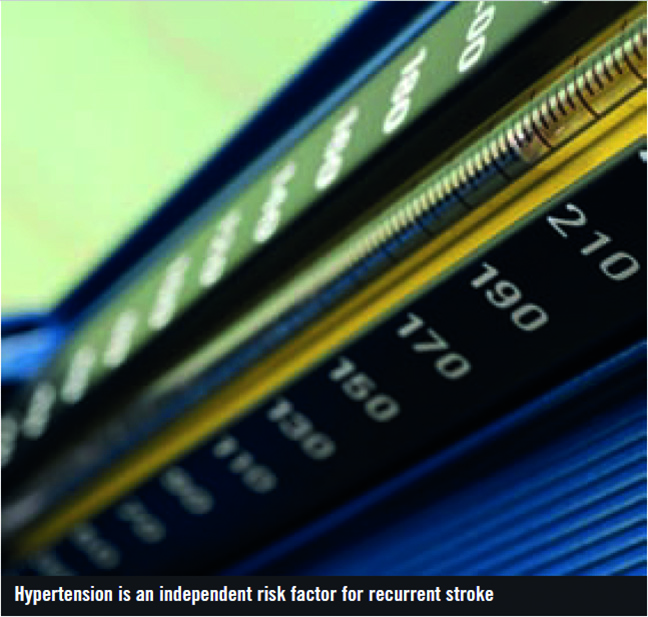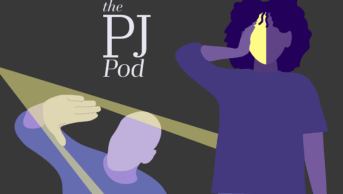
This content was published in 2011. We do not recommend that you take any clinical decisions based on this information without first ensuring you have checked the latest guidance.
Summary
An important component of the long-term treatment of patients who have suffered a stroke is managing sequelae, including swallowing difficulties, depression, spasticity, dry mouth and excessive saliva production.
Another key consideration is the prevention of secondary vascular events. For all types of stroke, good control of blood pressure reduces the risk of subsequent strokes. For patients who have suffered an ischaemic stroke, anti-platelet therapy (or anticoagulation in specific circumstances, such as for patients with atrial fibrillation) and cholesterol reduction are also important for secondary prevention.
The long-term management of patients who have suffered a stroke can be divided into two main areas — managing the sequelae of the stroke and preventing another vascular event.
In addition to considering what medicines are appropriate for the long-term management of stroke, pharmacists must also be aware of practical considerations around medicines administration. For example, they need to consider who is going to be administering a patient’s medicines. Can the patient do it or will he or she need the help of a carer? Does the patient have issues with manual dexterity, swallowing or memory, which may affect his or her ability to effectively and safely take medicines?
Sequelae of stroke
Swallowing difficulties
For many patients who experience swallowing difficulties (dysphagia) in the acute phase after stroke, the problem will become chronic. Stroke is the most common indication for patients receiving home enteral tube feeding.1 Whatever the care setting, it is essential that medicines are administered in the safest way possible. For most drugs used after stroke, administration via a feeding tube will be off licence. Every effort should be made to rationalise therapies and to prescribe the most appropriate formulation to help administration; proprietary liquids and dispersible tablets are preferable but few products come in these formulations. If crushing tablets is the only solution, ensure that nursing staff or carers are advised on the safest and most effective method of doing so. Speech and language therapists play a key role in the assessment and management of swallowing difficulties, and can identify patients who require input from a pharmacist to help tailor drug therapy to their swallowing requirements. Speech and language therapists are also highly involved with patients who have disorders of saliva production.
Excessive saliva production
In normal circumstances, a person with excessive saliva production (sialorrhoea) will compensate by increasing swallowing.2 For stroke patients, there may be a loss of control of facial and oral muscles, which can lead to drooling. If there is co-existing dysphagia, an increase in saliva production may also put the patient at an increased risk of aspiration. If patients are aware that they are drooling then it can be very upsetting for them, and also for carers and family members.
There is a lack of pharmaceutical options available to treat sialorrhoea. Antimuscarinics inhibit parasympathetic stimulation of the salivary glands and reduce salivary secretion and are the cornerstone of pharmacological treatment. The application of hyoscine patches can be effective, but prolonged use may be limited by central side effects such as confusion and restlessness, especially in elderly patients and those who require more than one patch to be applied at a time. Higher doses of hyoscine may also predispose patients to cardiac effects, namely tachycardia, which is undesirable in this patient group. This is an unlicensed indication for hyoscine patches.
Glycopyrronium bromide is believed to have fewer cardiac and central effects than hyoscine, but oral glycopyrronium has variable gastrointestinal absorption and preparations are not readily available in the UK. If available, glycopyrronium may be started orally at 500µg one to three times daily and titrated to effect.2 In some cases, the injectable solution is administered via patients’ feeding tubes, but this is an off-licence use and inappropriate outside the hospital environment.
Dry mouth
About 61% of patients who suffer a stroke will experience dry mouth (xerostomia).3 Dry mouth can be caused by reduced innervation of the salivary glands (due to the stroke), increased mouth breathing or decreased oral intake. It is also important to consider medicines as a cause of dry mouth, particularly those with antimuscarinic activity. Xerostomia can cause patients discomfort, increase the risk of oral and dental infections and contribute to swallowing difficulties. Application of artificial saliva can help relieve symptoms, and meticulous oral hygiene is essential to prevent infection.
Depression
Approximately a third of patients will suffer from depression after a stroke4 (although this figure may underestimate the prevalence because it can be hard to assess mood in patients with communication difficulties or neurological impairment). Appropriate and effective treatment of post-stroke depression is essential given the impact that it may have on a patient’s successful rehabilitation and, therefore, on the outcome of stroke. According to the “National clinical guideline for stroke”, all patients entering stroke rehabilitation should be screened for depression using a validated tool and observed regularly during and on finishing rehabilitation for mood changes.5
Despite the observed frequency of post-stroke depression, there is a relative lack of data on its treatment. A Cochrane review on the subject concludes that antidepressants may have a small but significant treatment effect on depression after stroke, but that their usage needs to be balanced against a significantly increased risk of adverse events.6 Most data are from studies using selective serotonin reuptake inhibitors, but no consensus is available on which one of these is the most effective. Although the evidence base to support treatment is lacking, it is inappropriate to deny antidepressant treatment to patients who require it. If indicated, antidepressants can be used with caution, with patients undergoing regular monitoring for efficacy and adverse effects. It should also be borne in mind that patient anxiety may be increased after stroke, and the initial effects of antidepressant therapy could worsen this.
Spasticity Spasticity has been estimated to affect 38% of patients after stroke.7 Increased muscular tone, abnormal posture and spasms can cause pain, limit the functional ability of limbs and impair patients’ ability to participate in rehabilitation and carry out activities of daily living.
The “National clinical guideline for stroke” recommends that patients who are affected by persistent focal spasticity in one or two joints should be treated with intramuscular botulinum toxin.5 However, patient access to this treatment might be limited by the lack of availability of specialist services to provide it. Some patients will benefit from skeletal muscle relaxants such as baclofen or tizanidine, but the use of these medicines is limited by side effects (particularly drowsiness and a lack of specificity for the affected muscle groups) and they should only be used under specialist supervision.
Seizures
Post-stroke seizures are a common problem: early-onset seizures affect about 2–33% and late-onset seizures about 3–67% of patients who have suffered an ischaemic stroke.8 Identification and diagnosis can be difficult because of the similarity of stroke and seizure symptoms.
Treatment of post-stroke seizures is controversial. There is a lack of evidence to support the routine use of antiepileptic drugs to prevent post-stroke seizures;9 however, if patients suffer recurrent seizures and a diagnosis of epilepsy is confirmed, it is widely accepted that treatment should be initiated.
The choice of medicine will depend on the patient, the type of seizure, the side effect profile of the antiepileptic drug and any potential interactions with other medicines. Antiepileptic drugs that cover a broad range of seizure types, such as sodium valproate and levetiracetam, are commonly used in practice. Phenytoin is less frequently used because of drug interactions (particularly with warfarin) and the perceived increased likelihood of drowsiness and confusion.
Secondary prevention
People with a history of ischaemic stroke or transient ischaemic attack (TIA) are at a high risk of all vascular events, such as myocardial infarction, and are at particular risk of subsequent stroke — the risk is about 10% in the first year and 5–7% each year thereafter.10 One in four strokes are second strokes. Therefore, secondary prevention measures are an important part of the long-term management of stroke patients.
Antiplatelet medicines
All patients who have had an ischaemic stroke should be considered for antiplatelet therapy to prevent secondary vascular events. Current treatment options include clopidogrel, aspirin and extended-release dipyridamole, all of which act via different mechanisms to inhibit platelet aggregation.
The combination of aspirin and extended-release dipyridamole has long been used for secondary prevention after ischaemic stroke. The “European stroke prevention study 2” compared the efficacy of monotherapy with aspirin or extended-release dipyridamole, and a combination of the two, with placebo for secondary prevention of ischaemic stroke. The combination of aspirin and extended-release dipyridamole reduced the risk of stroke or death by 24%. The risk was reduced by 13% with aspirin alone and by 15% with extended-release dipyridamole monotherapy.11
The PROFESS trial aimed to prove that extended-release dipyridamole was non-inferior to clopidogrel monotherapy for the secondary prevention of stroke, but the predefined non-inferiority criteria were not met.12 In addition, clopidogrel is associated with a lower incidence of adverse effects than the combination of aspirin and dipyridamole, which frequently causes headaches and gastrointestinal disturbances.13
The National Institute for Health and Clinical Excellence issued updated guidance in December 2010 that recommends clopidogrel monotherapy as the first-line agent for the secondary prevention of vascular events for patients who have had an ischaemic stroke.14 The combination of aspirin and extended-release dipyridamole should be considered for patients who have suffered a TIA or for people with ischaemic stroke in whom clopidogrel is contraindicated or not tolerated.14 Extended-release dipyridamole alone is an option for patients with ischaemic stroke in whom clopidogrel and aspirin are contraindicated or not tolerated or for patients with TIAs in whom aspirin is contraindicated or not tolerated.14
The combination of aspirin and clopidogrel is not routinely used for secondary prevention because the reduction in vascular events is outweighed by an increased risk of bleeding.15 However, in patients at high risk of secondary vascular events, such as those with significant carotid or cerebral stenosis, the combination of aspirin and clopidogrel can be used in the short term (up to three months post-stroke) when the patient is at the highest risk of having a recurrent event.15,16
Antiplatelet medicines that are prescribed for secondary prevention are usually started 14 days after the acute event (ie, after the acute phase antiplatelet course is complete) and should be continued indefinitely. Occasionally, antiplatelets may be started earlier if the patient is discharged from hospital within this period.
Anticoagulation
Warfarin should not be used routinely for secondary prevention in ischaemic stroke patients. Clinical trials that have investigated the use of warfarin for secondary prevention in all ischaemic stroke patients have not demonstrated any additional benefit with warfarin treatment compared with aspirin and the incidence of bleeding is much greater.17,18
However, for patients who have had an embolic ischaemic stroke, anticoagulation with medicines such as warfarin is the treatment of choice. (Some newer oral anticoagulants are likely to be licensed for the prevention of stroke in the near future, see Box 1.)
Box 1: Newer oral anticoagulants
The new factor Xa inhibitors, dabigatran and rivaroxaban, have been shown to reduce the incidence of stroke for patients with atrial fibrillation (AF).
The RE-LY study compared dabigatran (110mg twice daily and 150mg twice daily) with dose-adjusted open-label warfarin for stroke prevention in patients with AF. The lower dose of dabigatran was as effective at preventing stroke as warfarin and caused less bleeding. The higher dose of dabigatran was more effective at preventing stroke than warfarin, with a similar bleeding risk.19
The ROCKET-AF trial was a double-blind study that compared rivaroxaban with dose-adjusted warfarin in patients with AF; the primary endpoint was a composite of stroke and non-central nervous system embolism. Results from the trial showed that rivaroxaban was non-inferior to warfarin in the prevention of stroke with a comparable bleeding risk; however, superiority of rivaroxaban over warfarin was not shown.20
The main advantages of factor Xa inhibitors are that they have simpler dosing regimens and require less monitoring than warfarin. Based on the above results, both drugs are likely to gain licences for the prevention of stroke in patients with AF (such a licence for dabigatran is expected imminently). The National Institute for Health and Clinical Excellence is currently working on technology appraisals for both drugs for this indication. Based on concerns surrounding compliance with factor Xa inhibitors (since less intensive monitoring is required) and the high cost of the drugs, it is likely that their use will be limited to patients who cannot tolerate or are unsuitable for warfarin (ie, as a second-line approach).
Cardioembolic strokes account for about 20% of all ischaemic strokes. Atrial fibrillation (AF) is the most common cause of cardioembolic stroke (accounting for 12% of ischaemic strokes); other causes include prosthetic heart valves, infective endocarditis, mural thrombus, recent myocardial infarction, recent cardiac surgery, cardiomyopathy and heart failure.
All patients with a history of cardioembolic ischaemic stroke or TIA should be anticoagulated unless there is a contraindication to treatment. Several clinical trials have demonstrated the efficacy of warfarin for stroke prevention for patients with AF. An analysis of pooled data from five clinical trials comparing warfarin with placebo for primary prevention of stroke showed a consistent decrease in the risk of stroke, with an overall relative risk reduction of 68%.21 The “European atrial fibrillation trial” (EAFT) confirmed that there was a similar benefit when warfarin was used in the secondary prevention of stroke.22 Aspirin has been shown to be less effective than warfarin, decreasing the relative risk of stroke by 18% and 44% when using 75mg daily and 300mg daily, respectively.21 The incidence of bleeding was found to be similar with both doses of aspirin.
There is no evidence to guide when patients should be anticoagulated after cardioembolic stroke. In EAFT, most patients were anticoagulated 14 days after the stroke, but most of these patients had suffered a minor stroke or TIA.22 The early use of anticoagulation for patients who have suffered a large cardioembolic stroke, with or without uncontrolled hypertension, may increase the risk of haemorrhagic transformation of the initial infarct. In practice, warfarin tends to be started 14 days after the acute event, although it can be started earlier or later depending on the perceived risk of haemorrhagic transformation for individual patients.
Cholesterol reduction
The evidence for the stroke-related benefits of statin treatment originally came from sub-group analyses of data from ischaemic heart disease trials. In these analyses the addition of simvastatin 40mg daily, irrespective of initial cholesterol levels, decreased the risk of ischaemic stroke by 25%.23 In the first stroke-specific statin trial atorvastatin was shown to decrease the risk of stroke by 16%; 45 patients would need to be treated for five years to prevent one stroke.24
Evidence suggests that the protective effects of statins extend far beyond cholesterol reduction. Statins are vasoprotective — they increase the bioavailability of nitric oxide, improve endothelial function, stabilise microvascular integrity and have anti-inflammatory effects — which may be partially responsible for the benefit of statin therapy in stroke prevention.25
However, statins have not been shown to reduce the incidence of haemorrhagic stroke. Data from the recent SPARCL study suggest that treatment with high-dose atorvastatin could increase the risk of haemorrhagic stroke; however, the statistical significance of the association could not be determined due to the small number of patients affected.24
Therefore, statins are not used for secondary prevention in patients with a history of haemorrhagic stroke, unless the patient also has hyperlipidaemia requiring treatment.
Simvastatin 40mg daily remains the treatment of choice, although cholesterol levels should be reviewed regularly to ensure total cholesterol is <4mmol/L and low density lipoprotein cholesterol is <2mmol/L.5 High-intensity statins should be considered if the desired levels are not achieved.

Hypertension
Hypertension is an independent risk factor for recurrent stroke. The relationship between hypertension and stroke risk is almost linear — the greater the blood pressure, the greater the risk of stroke.
The use of perindopril plus indapamide for patients with previous stroke or TIA over four years was shown to decrease blood pressure by 12/5mmHg and the relative risk of stroke by 43%. In this study a similar reduction in stroke risk was seen for hypertensive and non-hypertensive patients, and the risk of both ischaemic and haemorrhagic strokes were reduced.26
Therefore, the use of low-dose antihypertensives should be considered for all patients, even those who are normotensive. Tight blood pressure control (<130/80mmHg) is one of the single most important interventions for secondary stroke prevention.
Diabetes
People with type 2 diabetes are two-to-three times more likely to suffer an ischaemic stroke than those without the condition. Diabetes is a risk factor for carotid atherosclerosis and small vessel cerebrovascular disease and therefore increases the risk of stroke.
Most of the data on stroke prevention for patients with diabetes are about primary rather than secondary prevention. Tight glycaemic control has been shown to reduce microvascular complications (eg, nephropathy and retinopathy) but there are fewer data on the effect of tight glycaemic control on macrovascular complications (including stroke). Analysis of data from randomised trials suggests that improving glycaemic control will lead to a reduction in vascular events.27 Although there are no specific guidelines for the management of diabetes for patients who have suffered strokes, improving glycaemic control for these patients is recommended as part of standard secondary prevention measures.
References
- British Artificial Nutrition Survey. Annual BANS Report, 2009. www.bapen.org.uk (accessed 9 March 2011).
- Hockstein NG, Samadi DS, Gendron K, et al. Sialorrhea: a management challenge. American Family Physician 2004;69:2628–34.
- Kerr GD, Sellars C, Bowie L, et al. Xerostomia after Acute Stroke. Cerebrovascular Diseases 2009;28:624–6.
- Hackett ML, Yapa C, Parag V, et al. Frequency of depression after stroke: a systematic review of observational studies. Stroke 2005;36:1330–40.
- Royal College of Physicians Intercollegiate Stroke Working Party. National clinical guideline for stroke, 3rd edition. July 2008. www.rcplondon.ac.uk/resources/stroke-guidelines (accessed 9 March 2011).
- Hackett ML, Anderson CS, House A, et al. Interventions for treating depression after stroke. Cochrane Database of Systematic Reviews 2008; issue 4.
- Watkins CL, Leathley MJ, Gregson JM, et al. Prevalence of spasticity post stroke. Clinical Rehabilitation 2002;16:515–22.
- Camilo O, Goldstein LB. Seizures and epilepsy after ischaemic stroke. Stroke 2004;35:1769–75.
- Kwan J, Wood E. Antiepileptic drugs for the primary and secondary prevention of seizures after stroke. Cochrane Database of Systematic Reviews 2010; issue 1.
- Lip GYH, Kalra L. Stroke: secondary prevention. Clinical Evidence 2010;3:207.
- Diener HC, Cunha L, Forbes C, et al. European stroke prevention study 2. Dipyridamole and acetylsalicylic acid in the secondary prevention of stroke. Journal of the Neurological Sciences 1996;143:1–13.
- Sacco RL, Diener HC, Yusuf S, et al. Aspirin and extended-release dipyridamole versus clopidogrel for recurrent stroke. New England Journal of Medicine 2008;359:1238–51.
- Langhorne P, Sandercock P, Prasad K. Evidence-based practice for stroke. Lancet Neurology 2009;8:308–96.
- National Institute for Health and Clinical Excellence. Clopidogrel and modified-release dipyridamole for the prevention of occlusive vascular events. December 2010. www.nice.org.uk/ta210 (accessed 9 March 2011).
- Diener HC, Bogousslavsky J, Brass LM, et al. Aspirin and clopidogrel compared with clopidogrel alone after recent ischaemic stroke or transient ischaemic attack in high risk patients (MATCH); randomised, double-blind, placebo-controlled trial. Lancet 2004;364:331–7.
- Markus HS, Droste DW, Kaps M, et al. Dual antiplatelet therapy with clopidogrel and aspirin in symptomatic carotid stenosis evaluated using Doppler embolic signal detection; the clopidogrel and aspirin for reduction of emboli in symptomatic carotid stenosis (CARESS) trial. Circulation 2005;111:2233–40.
- The ESPIRIT Study Group. Aspirin plus dipyridamole versus aspirin alone after cerebral ischaemia of arterial origin (ESPIRIT): randomised controlled trial. Lancet 2006;367:1665–73.
- Mohr JP, Thompson JLP, Lazar RM, et al. A comparison of warfarin and aspirin for the prevention of recurrent ischaemic stroke. New England Journal of Medicine 2001;345:1444–51.
- Connolly SJ, Ezekowitz MD, Yusuf S, et al. Dabigatran versus warfarin in patients with atrial fibrillation. New England Journal of Medicine 2009;361:1139–51.
- ROCKET-AF Executive Steering Committee. Stroke prevention using the oral direct factor Xa inhibitor rivaroxaban compared with warfarin in patients with nonvalvular atrial fibrillation. American Heart Association Scientific Sessions. Chicago, USA. 13–17 November 2010.
- Risk factors for stroke and efficacy of antithrombotic therapy in atrial fibrillation: analysis of pooled data from five randomised controlled trials. Archives of Internal Medicine 1994;154:1449–57.
- European Atrial Fibrillation Trial Study Group. Secondary prevention in non-rheumatic atrial fibrillation after transient ischaemic attack or minor stroke. Lancet 1993;342:1255–62.
- Heart Protection Study Collaborative Group. MRC/BHF Heart protection study of cholesterol lowering with simvastatin in 20536 high-risk individuals: a randomised placebo-controlled trial. Lancet 2002;360:7–22.
- The Stroke Prevention by Aggressive Reduction in Cholesterol Levels (SPARCL) Investigators. High dose atorvastatin after stroke or transient ischaemic attack. New England Journal of Medicine 2006;355:549–59.
- Prinz V, Endres M. Statins and stroke: prevention and beyond. Current Opinion in Neurology 2011;24:75–80.
- PROGRESS Collaborative Group. Randomised trial of perindopril-based blood-pressure-lowering regimen among 6,105 individuals with previous stroke or transient ischaemic attack. Lancet 2001;358:1033–41.
- American Diabetes Association. Standards of medical care for patients with diabetes mellitus. Diabetes Care 2003;26(suppl 1):S33–S50.


